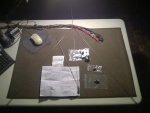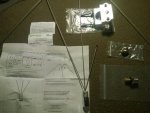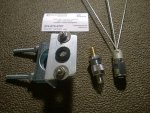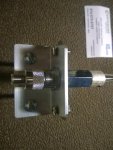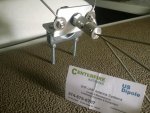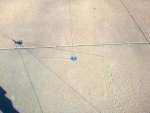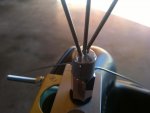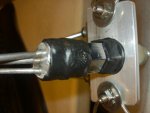joeuser
The Wretched
This is my attempt to review this antenna from the Centerfire business. They appear to make not only scanner antennas but also HAM antennas. This will cover one specific model that I purchased a few days ago from the center fire antennas.com website found at this URL: VHF/UHF Multi Band | Centerfire Antenna My sole motive here is to review this & share it with readers @ RR. I am not being compensated in any way, I have no interests with this business. I am just a customer.
The base cost is 39.95 USD, however there is another option explored more below. Shipping is 5.75 to anywhere in the USA. I was checked out by way of PayPal.
My order arrived quickly, by way of USPS priority mail, in one of those triangular boxes that the USPS will provide to shippers for free. It was rather beat up but it didn't seem to have any adverse effect on the unit. In a little box I found the SO-239 stud, a nylon ring, an UHF male to F type female adapter*, the pole mounting apparatus, instructions, a business card, & another business card with helpful but basic emergency preparedness information.
*The adapter is optional & the price with the adapter is 44.90 USD.
The base cost is 39.95 USD, however there is another option explored more below. Shipping is 5.75 to anywhere in the USA. I was checked out by way of PayPal.
My order arrived quickly, by way of USPS priority mail, in one of those triangular boxes that the USPS will provide to shippers for free. It was rather beat up but it didn't seem to have any adverse effect on the unit. In a little box I found the SO-239 stud, a nylon ring, an UHF male to F type female adapter*, the pole mounting apparatus, instructions, a business card, & another business card with helpful but basic emergency preparedness information.
*The adapter is optional & the price with the adapter is 44.90 USD.


